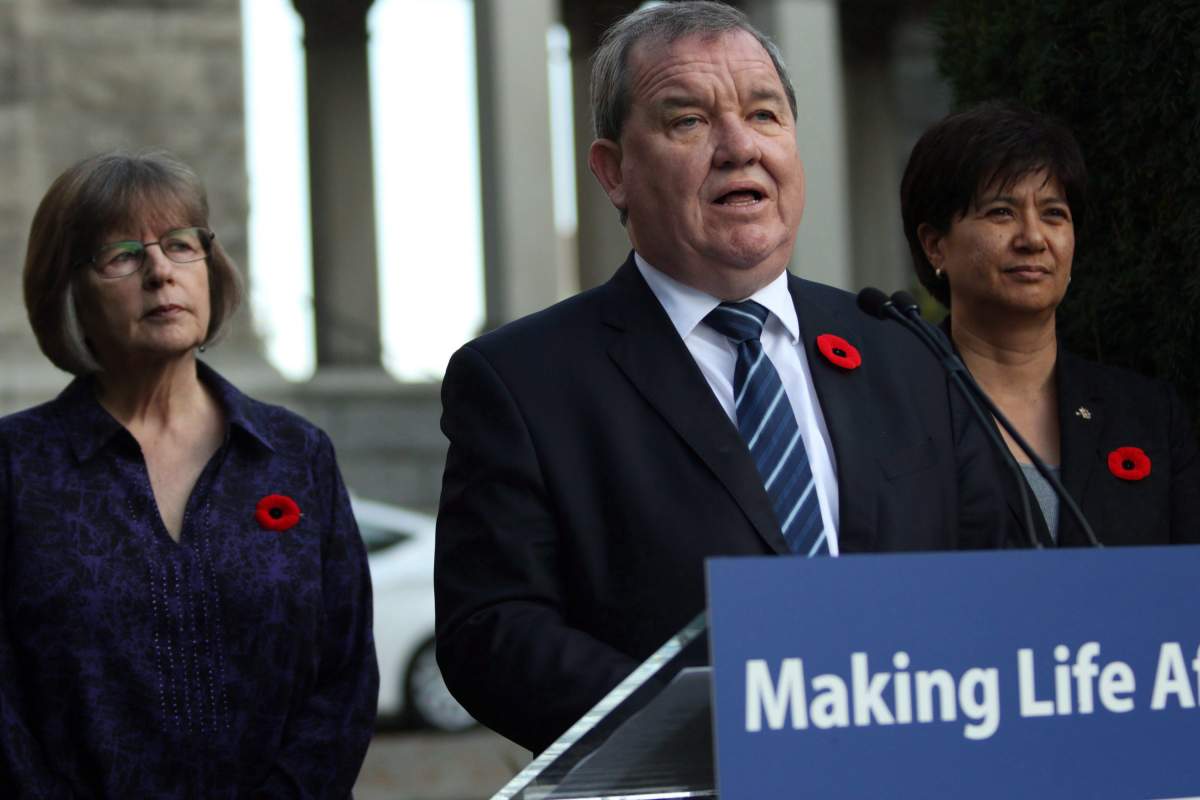The B.C. government is promising to reduce the child poverty rate in B.C. by 50 per cent, and the overall poverty rate by 25 per cent, in the next five years.

Minister of Social Development and Poverty Reduction Shane Simpson says until now, British Columbia was the only province in the country without a poverty reduction plan.
“We are confident that while those targets are bold, we have the capacity to meet those targets as well as to build the opportunity to break the cycle of poverty moving forward,” said Simpson.
“These targets are the clearest and maybe the most bold.”
The legislation introduced Tuesday requires the government to release its full poverty reduction strategy by March 31, 2019.
The provincial government also did not provide any costs associated with the plan with Simpson promising to have budget numbers in next February’s budget. As part of the new legislation, the province government spoke to 8,500 people across the province.
WATCH HERE: B.C. still has one of the highest child poverty levels in Canada

Currently, B.C. has the second highest rate of poverty overall among all the provinces and the highest rate of poverty among children. If the proposed targets are hit, that would drastically change.

Get breaking National news
“Based on the projections and what we understand the initiatives from other provinces will be, we would have the third lowest poverty rate overall and the lowest poverty rate for children overall,” said Simpson. “British Columbia has not addressed this issue. It was simply not a priority of the previous government.”
Simpson says other provinces have targets as part of the poverty reduction plan, but few have legislated targets. The B.C. government has already committed to getting rid of Medical Service Plan premiums, increasing the minimum wage and reducing the cost of childcare, which will all help those in poverty.
“Childcare is going to be a critical piece of reducing poverty. The minimum wage is a critical piece for the working poor,” said Simpson. “We are going to look at poverty in a range of ways. The MSP will help with that.”
As part of the overall plan, the province will establish an independent advisory committee that will examine the personal and professional experiences of poverty in B.C. and advise the minister on matters relating to poverty reduction and prevention. If the legislation is passed, the government will be required to report annually on its progress to reduce poverty.
WATCH HERE: Federal government unveils poverty reduction plan

The commitment to a poverty reduction strategy, in addition to addressing liveable wages under B.C.’s new Fair Wages Commission and exploring basic income, is a component of the Confidence and Supply Agreement with the B.C. Green Party caucus.
“First Call’s Child Poverty Report Card shows one in five B.C. children live in poverty and we have called for a 50% reduction in B.C.’s child poverty rate since 2009. We are pleased that government has listened and has this target and timeline in legislation,” said First Call provincial co-ordinator Adrienne Montani.
“Reaching this target will benefit the health and well-being of thousands of children and youth, and may well reduce the number of children coming into government care. Our coalition looks forward to working with government to deliver on this target and help more children, youth and families thrive.”








Comments